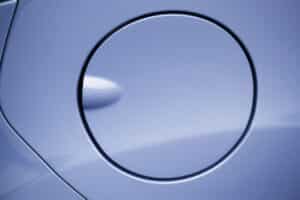How to Mask a Fuel Filler Cap
Taping off more intricate car parts for painting or repairs can require more specialist masking products and application techniques. This is especially true when dealing with the fuel filler cap area, since it’s often relatively small and has many tight corners to contend with. If you’ve previously struggled with masking off this area and achieving the desired paint finish around the fuel filler door, we have the perfect solution for you. Rather than spending more time than necessary applying a rigid tape to the car, it’s best to use something with more flexibility.
All our JTAPE products are expertly designed to work for you no matter what the job at hand is. From masking off large areas to the smallest, most complex car parts, different tapes are best suited for specific purposes. Knowing which to use and when is one of the best things you can learn as an auto repair professional.
So which of our tapes is best for use around fuel filler caps and what’s the best process to follow for masking it off seamlessly? Below we’ll guide you through everything you need to know to get a flawless finish around this trickier car part.
Best Tape for Masking Fuel Filler Caps
One of our tapes stands above the rest for masking off the fuel filler cap and giving the best paint finish possible. Find out about our excellent quality, unique blending tape and all its top features below.
Flexi No Edge Blending Tape

Our Flexi No Edge Blending Tape can easily mask around tight turns and corners, making it perfect for masking off inside fuel filler caps. The flexible foam can quickly conform to any turn or corner, alongside being paint absorbent and leaving a high-quality feathered edge finish.
This tape solution benefits from a range of excellent features, including temperature resistance up to 90C/194F and easy removal that won’t leave behind any adhesive residue or damage the surface it was applied to. It can be used with many types of automotive paint and paint tools, without worry that overspray will be an issue.
Our Flexi No Edge Blending Tape is often compared to our No Edge Blending Tape, although the major difference between the two is flexibility and conformability. While the flexi version makes light work of adhering around bends, our other unique tape is better for masking off straight swage lines without leaving a harsh edge. For more information on the differences between the two, check out our handy comparison blog.
How to Mask a Fuel Filler Cap for Painting
Although this is an intricate part of the car, our blending tape takes all the difficulty out of the application process. While some masking tapes are rigid and difficult to use around curves, the Flexi No Edge Blending Tape works around curves effortlessly.
Simply open the fuel door, take our Flexi No Edge Blending Tape, unravel a section and remove the protective film liner as you go, before applying it to the inside edge of the fuel filler cap. It’s usually best to start around the back of the hinge by placing the tape underneath it so that it sits flat against the filler cap edge. Try not to stretch the product as you go, since this can leave you with an uneven finish.

Make sure to attach the tape as close to the painted edge as possible while still allowing the door to close since this will provide you with the best paint finish. To finish off your application, press the adhesive relatively firmly to ensure you have a secure fix and check that any gaps are covered. Overlapping the two edges will usually do the trick to prevent gaps where paint can seep through. It may be useful to step the tape back at this stage, either with your index finger or a spreader to achieve the desired depth. You can then close the fuel door and begin the painting process without worrying about overspray reaching inside.
Tape removal is also as simple and easy as application. Once your clear coat is dry, open the door and pull the tape from one end to stretch it. This will release the adhesive from the inside of the fuel filler cap and won’t leave any residue.
After removal, you should be left with the perfect blended edge around the fuel filler cap with no overspray in sight. This eliminates the need for any reworking and makes your painting process much more efficient.
We hope our product recommendation and how-to explanation show you just how simple and easy this process can be. Our product range has been meticulously designed and manufactured to give auto repair and paint professionals the best applications for a variety of jobs as requested by vehicle owners. For more information about us and our tape solutions, head to our product page.


